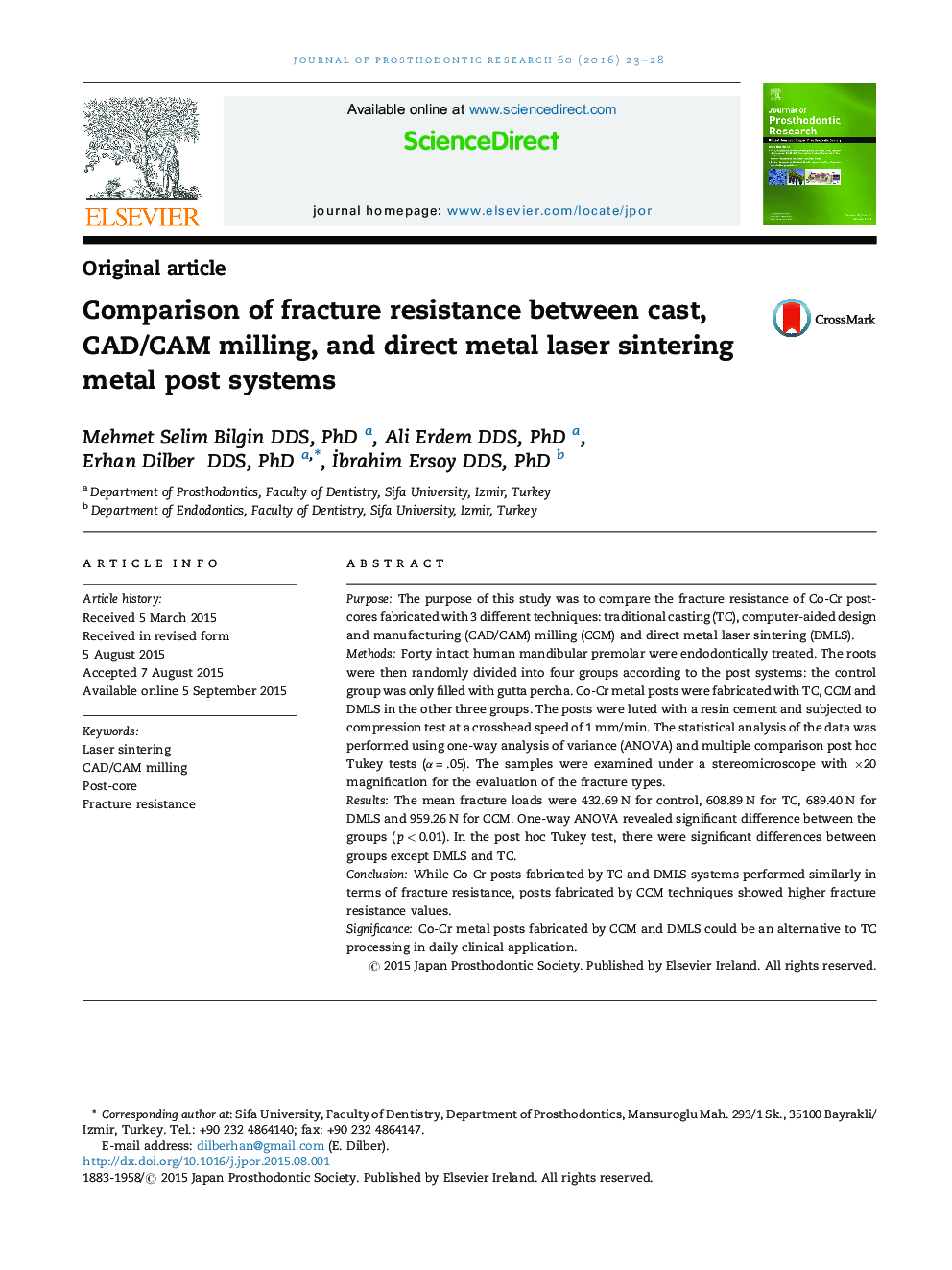| Article ID | Journal | Published Year | Pages | File Type |
|---|---|---|---|---|
| 3160626 | Journal of Prosthodontic Research | 2016 | 6 Pages |
PurposeThe purpose of this study was to compare the fracture resistance of Co-Cr post-cores fabricated with 3 different techniques: traditional casting (TC), computer-aided design and manufacturing (CAD/CAM) milling (CCM) and direct metal laser sintering (DMLS).MethodsForty intact human mandibular premolar were endodontically treated. The roots were then randomly divided into four groups according to the post systems: the control group was only filled with gutta percha. Co-Cr metal posts were fabricated with TC, CCM and DMLS in the other three groups. The posts were luted with a resin cement and subjected to compression test at a crosshead speed of 1 mm/min. The statistical analysis of the data was performed using one-way analysis of variance (ANOVA) and multiple comparison post hoc Tukey tests (α = .05). The samples were examined under a stereomicroscope with ×20 magnification for the evaluation of the fracture types.ResultsThe mean fracture loads were 432.69 N for control, 608.89 N for TC, 689.40 N for DMLS and 959.26 N for CCM. One-way ANOVA revealed significant difference between the groups (p < 0.01). In the post hoc Tukey test, there were significant differences between groups except DMLS and TC.ConclusionWhile Co-Cr posts fabricated by TC and DMLS systems performed similarly in terms of fracture resistance, posts fabricated by CCM techniques showed higher fracture resistance values.SignificanceCo-Cr metal posts fabricated by CCM and DMLS could be an alternative to TC processing in daily clinical application.
